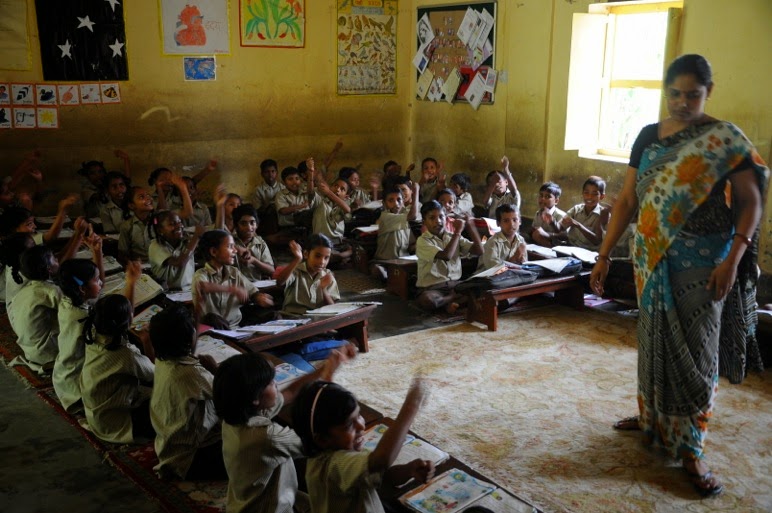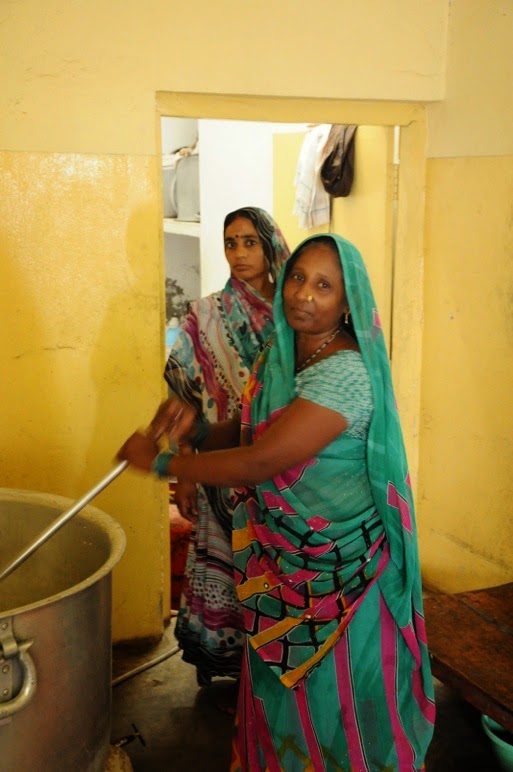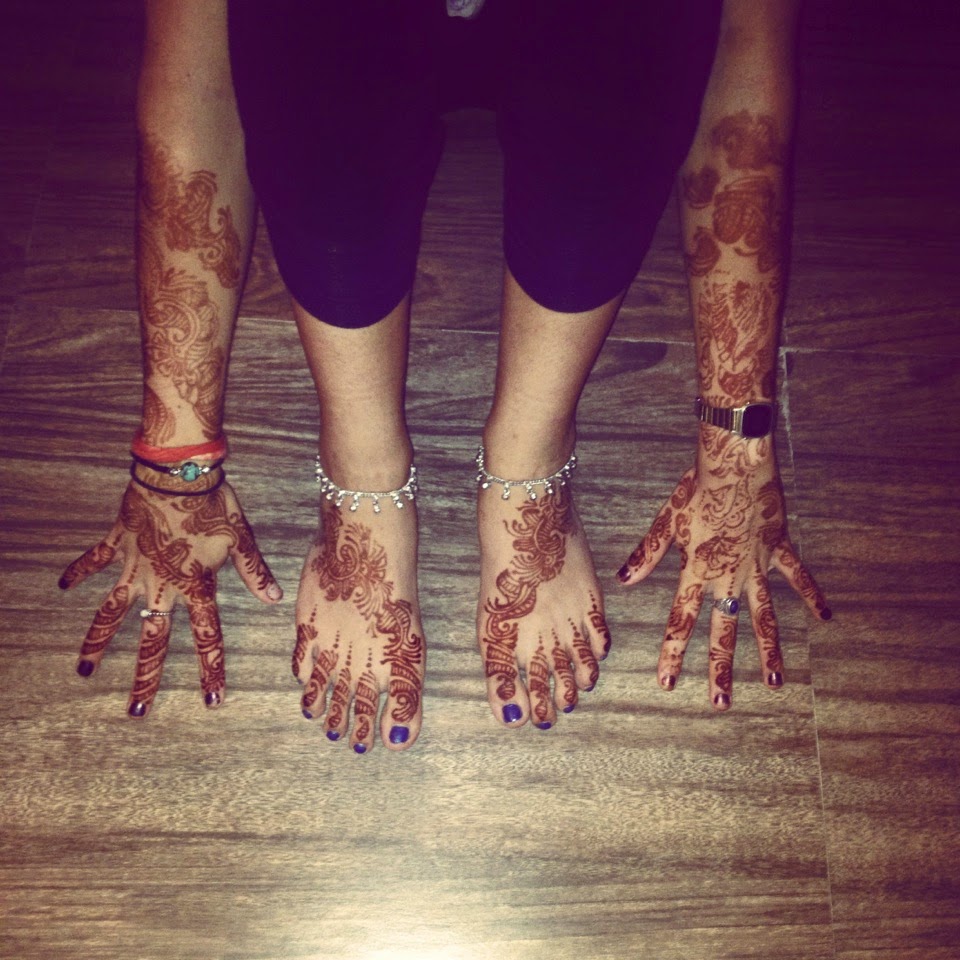Our life-changing stay at Project Mala.
As part of her final year Geography dissertation, my girlfriend Miranda came across Project Mala while researching gender inequality in education across India and the rural areas of Uttar Pradesh. Amazed by the aims and successes of this organization in reducing the gender gap and educating hundreds of underprivileged girls over their 25 year period, she emailed Anne Bate hoping to ask some questions about Project Mala’s success. From the point of first contact Anne was incredibly knowledgeable, helpful, and forthcoming - going beyond what could be expected and giving a comprehensive insight into the challenges faced and the initiatives that have been put in place.
The value of the work became apparent very early on and what a huge impact Project Mala has had in the areas affected in Uttar Pradesh and further into India. Inspired by the work, Miranda set out to make the trip to the project to experience the challenges and efforts first hand.
I was lucky enough to be the chosen travelling companion who tagged along with her adventure, expecting to fly back home after 3 weeks in rainy Kerala before Miranda arrived in Uttar Pradesh. With it being my first time in India I didn’t quite know what to expect, but unsurprisingly I immediately fell in love with the country. It didn’t take much persuading to get me to re-arrange my flights and continue on the rest of the journey, which now involved diving deep into the research she was conducting.
 |
| Daktar our chauffeur |
36 hours on a train from Mumbai and we arrived in Varanasi at night - instantly greeted by a beaming Daktar and another member of staff who were waiting on the platform for us. Daktar was one of the many background staff who continuously made our stay one we’ll never forget.
 |
| Miranda and the oh so attentive children in Guria |
Guria was a perfect base camp for us since it has classes all through the education system, from years 1 to 10. This way I could see first hand the development of the children as I moved from one classroom to the other.
I quickly focused on joining in with the English classes (mainly because the 10 year olds were better at Maths than me, and my Hindi was non-existent) and was taken aback by the level of comprehension and understanding, right from class1.
 |
| Prema teaching English phonetically |
She led classes with fun hand actions that represent the 46 sounds of the English language and the entire class echoed back after her. What was great to see was the children role-playing, involved in the actions and being encouraged by classmates when they got something wrong. I sat in on a few video lessons where the youngest children were shown episodes of “Muzzy in Gondoland” (an English children’s programme), and asked to re-enact scenes speaking entirely in English. Following a class, even over as short a time as a week, you see how quickly the children pick accents and vocabulary up, and are all so confident in trying out what they’ve learnt on English speakers such as myself.
 Throughout the day I picked up on so many of the great initiatives that have been brought in to help the children in and outside of the classroom. I could hear the sewing machines beavering away making new uniforms for the various year groups, cooks preparing a ginormous vat of rice and vegetable curry for lunch, see children reading various Hindi and English books in the library or playing cricket in the field. There was constant development to the school buildings too, with desks provided for the secondary school students, a new computer lab and listening classroom with laptops and headsets to help improve IT skills and spoken English, not dissimilar at all to my IT experiences in England.
Throughout the day I picked up on so many of the great initiatives that have been brought in to help the children in and outside of the classroom. I could hear the sewing machines beavering away making new uniforms for the various year groups, cooks preparing a ginormous vat of rice and vegetable curry for lunch, see children reading various Hindi and English books in the library or playing cricket in the field. There was constant development to the school buildings too, with desks provided for the secondary school students, a new computer lab and listening classroom with laptops and headsets to help improve IT skills and spoken English, not dissimilar at all to my IT experiences in England.All the classrooms were peppered with fun posters or the children’s work and drawings - there is a beautiful mural painted in honour of Project Mala’s 25th anniversary which really gives the children ownership and pride in their school and their work. This is something I really picked up on when asking them how they feel about it.
As I made my way up the year groups I was surprised to see so many girls still in each classroom. I had been led to believe that girls tend to leave education in rural areas to fulfil duties at home, and that attendance was much lower in the older age groups. It is testimony to the hard work and ideals of Project Mala to see how well individuals and entire female year groups are doing in school, something I became aware of when viewing the data on attendance and achievement that the office diligently collects. While in the very top two classes there were slightly fewer girls than boys, I was told that the girls achieved better in certain subjects and were more focussed and harder workers.
I sat in on lessons through middle school and secondary school, impressed by the answers I received when testing the pupils on their grammar, spelling and pronunciation. In classes 8,9 and 10 I was able to quiz entire classes on complex biology while only speaking in English. Receiving GCSE standard answers from students only aged 13 in a foreign language was mind-blowing and something I wanted to explore further.
While the activities of the school day and the enthusiasm of the teachers and children to learning was incredibly inspiring, it was when school had finished for the day that I had the most enjoyment at Guria. While all the younger classes head off home in minibuses or on bicycles provided by the school, the boarding children remain. Since Guria has classes 9 and 10, something the other 4 schools ran by Project Mala don’t have (yet), students that have graduated year 8 across the other rural schools compete academically to receive a prestigious place in classes 9 and 10 at Guria. Unfortunately this means that not all the children across the schools receive these final two years of education at Project Mala’s incredible schools, however, it does allow the most gifted children to travel up to 80 miles to continue their studies in Guria. Around 30 boys and 13 girls (this year) live in the boarding houses where the guest house and school is located, joining the local older children who travel from home when school starts at 9 o’clock. It is with these students that Miranda and I got the best idea of what it’s like to be a pupil of Project Mala and the difficulties one must overcome to achieve in education when originating from rural backgrounds where such opportunities are so rare.
The level of English of all these boys and girls is outstanding - the vast majority are fully comprehendible in English on most topics of conversation and are easy to understand when talking to them alone or in a group. My first day I got involved with some after school cricket taught by Pawan, the games teacher, and head of the boarding boys dormitory, and I developed a new found respect for touring English teams attempting to weather the Indian climate as well as their bowling… I stupidly accepted an offer to play chess against some of the 14-15 year old boys and was beaten in 5 (yes honestly 5) moves twice on the trot. I fared better in my third game but it wasn’t until day 4 I finally beat one of them, and that was only with Manish Kumar whispering in my ear what to do.
 When collecting Miranda from the girls’ dorm before dinner was served I found her covered head to toe in henna and her hair braided like the rest of the girls who had also been teaching her how to massage!
When collecting Miranda from the girls’ dorm before dinner was served I found her covered head to toe in henna and her hair braided like the rest of the girls who had also been teaching her how to massage!The children wake up at 5am in order to fit in yoga and exercise before studying before school, and are forced to have the lights turned off at 10pm to stop them reading all through the night. For someone who struggles to make 9am lectures on a weekday morning it was slightly embarrassing and inspiring to say the least.
When I’d ask what they wanted to do when they left school, their aspirations were direct and thoughtful,; “Doctor.” “Doctor” “Engineer” “Doctor” “Engineer”... etc. Yet almost every single one came from a family where the father is a farmer and the mother is a housewife. I have no doubt the same drive is reflected in the rest of the students who are not boarding at the school.
I could continue talking about the inspiring experiences with everyone at Guria for days but I must mention the other four schools we visited. Each school unique in its own individual way, whether it be Turkahan where you have to travel up steep hills and massive plains or Hasra with it’s cool play ‘mud-huts’ for the children to explore, you’re still going to find the same passion for learning and teaching across all pupils and staff at all the schools.
Other than the varying age groups, there are many similarities between all the schools and Guria but one initiative really stood out for me at Turkahan and Patehra. Here in addition to the regular teaching, there were playgroups for girls not quite old enough to attend school yet. Here they get together to use toys and start the very basic building blocks of education, such as using different shaped items to start a concept of maths. As a neuroscientist, this opportunity just to play for young girls who might not necessarily leave the house until schooling starts at 5 years old, is one of the most worthwhile. The scheme is relatively new but I can imagine the progression in development across the schools where these play schools take place will be significant. I’d be really interested to see this idea expanded and monitored across as many schools as possible.
I’d love to keep talking about some of the amazing things we saw and did while at Project Mala’s schools but I fear I’ve rambled too much. There are a lot of people who made our journey possible and as enjoyable as it was. We want to thank all the office staff and teachers at Guria, who constantly prioritized hospitality over any of their engagements; without their interviews and information, Miranda’s dissertation would not be possible. The cooks for their incredible meals (and snacks) they provided 3 times a day, even if I blame them fully for my current post-India massive waistline… The cleaners and on-site staff for refusing to allow us to wash or take plates and rooms to clean ourselves, not to mention driving us across all parts of Uttar Pradesh to visit schools and other charities. Finally we’d like to thank Anne, the Education Adviser and Robin, the founder and Chairman for giving us the opportunity to visit Project Mala and also for establishing it in the first place; we had a life changing time and it wouldn’t be possible without their constant guidance and effort.
We hope to meet you all again and see more and more children popping up on the website from attending your schools!
Dhanyavaad!
Max and Miranda.



